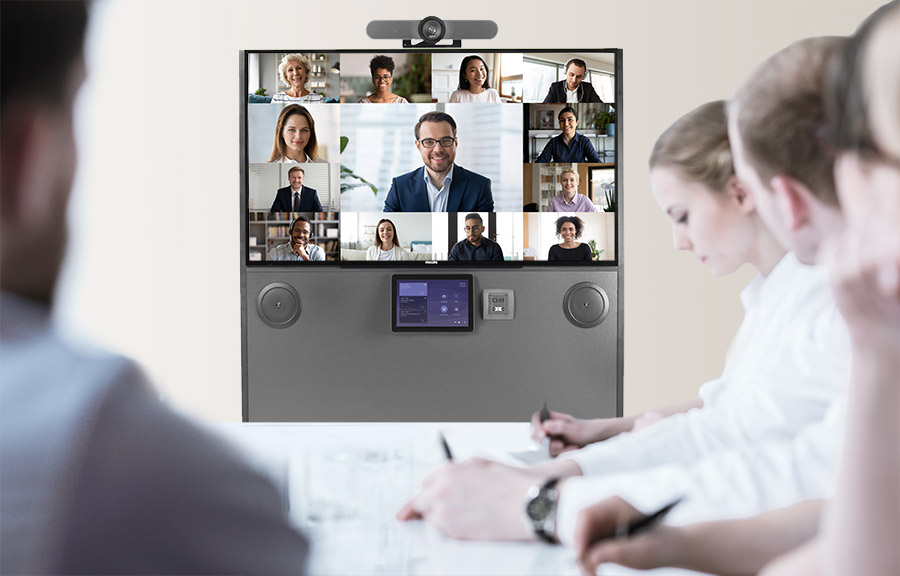Top Tips for Improving Team Performance using Collaboration Systems
Posted by Nick Yeandle on 01/11/2020

Team Performance in Unsettled Times
Motivating, developing and rewarding a team to continually improve performance can be a challenging task for businesses even during the most straight forward times. Getting the right people in place and ensuring they gel harmoniously with other team members in working towards company objectives is no easy task! Add into the mix the unprecedented 2020 pandemic which has split teams across multiple locations, including many employees working from home for the first time, and you have the perfect storm for disrupting established team dynamics.
When unsettling times set in, team morale and performance can start to wain, especially with so many new processes to learn quickly. So how do you ensure your team stays at the top of its game during this unique period? We take a look at some of the ways businesses can maintain and even improve team performance using collaboration systems when working under the 'new normal' and beyond.
1. Get acquainted with face to face collaboration using video conferencing
When working alongside other team members in person, we convey a great deal of information about our feelings and situation unconsciously through our expressions or body language. E-mail and phone calls can be easily misinterpreted leading to misunderstandings or unnecessary rifts within a team. Regular video conferencing provides a good substitute for face to face meetings and in it's simplest form is very easy to set up on a PC or laptop using platforms such as Microsoft Teams, Zoom Conferencing or Google Hangouts. For those who have large teams with some working in the office and others at home a video conferencing solution such as our wall-mounted or portable system may be more appropriate. Different camera and microphone options can enable groups of people distanced around a single room to collaborate with home workers or teams at other sites. Those who need to carry out virtual product demonstrations will also benefit, as an operator can zoom in and out of product features during a demo.

2. Substitute in-person sales meetings or customer visits with video conferencing
We believe that video conferencing will play a much bigger part in the sales, account management and organisational decision-making processes way beyond the current pandemic. High-quality video calls have proved to be a practical substitute for face to face meetings, in many cases improving efficiency of sales teams and inter-departmental meetings by cutting out unnecessary journeys. Whilst not all trips can be avoided, it is certainly possible to improve team performance by reaping savings in travel costs and time while also helping to lessen the environmental impact of your business. Think of the gains within a sales team that spends more time prospecting and sitting virtual meetings instead of using that same time to travel from place to place.
3. Ensure your collaboration systems are intuitive and easy to use
When implementing new systems or processes, there is always likely to be some resistance. All hardware and software should be easy and intuitive to use to increase the chances of new working practices being successfully adopted with as few hiccups as possible. You may want to choose collaboration software that is widely used, or at least common within your sector, so anyone joining your organisation can get up to speed fast.
4. Provide appropriate training and support
As with the introduction of any new system, implementation of collaboration software or hardware tools needs to be accompanied with appropriate training. During the pandemic this training may need to be carried out online. We recommend providing a recording or some slides for participants to refer to afterwards. To get the most out of your team performance it's vital to provide ongoing training to help users get to grips with the more advanced features of the collaboration tools and demonstrate how they can be used to streamline existing processes.
5. Identify solutions which will benefit your team in the long term
March 2020 saw many companies become panicked into seeking a quick fix to a new and rapidly emerging problem as the UK locked down. Many organisations moved swiftly to utilise new collaboration tools to communicate with remote workers and prospects for the first time. If you happened to choose systems as part of a swift reaction to the pandemic it may be worth taking stock now and undertaking a review.
Try to identify which collaboration tools are likely to be the best fit for the needs of your organisation in the long term. Following a review, ask yourself whether you are using the optimum package for your team. This process ensures you invest in the most cost-effective solution with the ability to enhance team performance and avoids having to swap systems out again in quick succession with the associated re-training costs. At least some of the working practices introduced for the pandemic are likely to become a permanent fixture, so it's important to evaluate collaboration tools from a strategic perspective.
6. Consider how to reward employees working from home

When out of sight at home, employees become in some ways almost invisible to their line managers. While managers worry that their teams might be spending rather too long under the duvet in preference to compiling the latest spreadsheet, employees in turn worry if the hard work they are putting in at home is going unnoticed. Worries for employees around recognition and promotion are exacerbated even further when some team members remain in the office and highly visible to their boss, whilst others working from home can be somewhat out of mind. We recommend that when choosing collaboration software that you consider the ability each has to monitor performance and share information openly. Regular video conferences and team collaboration can take away feelings of remoteness, whilst using a system that also provides instant messaging during the working day can enable team members to ask or respond to questions in a less formal setting. Remember that regular appraisals and personal development opportunities should continue to occur while employees are working remotely. Simple video conferencing or collaboration tools can be used to facilitate appraisal meetings face to face and even to deliver online training.
Whilst some workers will return to the office post-pandemic, we believe many organisations will continue to operate a more efficient hybrid model with at least some people having the option to work at home or from remote locations at least some of the time. The pandemic has also demonstrated how video conferencing and online collaboration systems can improve team performance through better time management, streamlining of processes and enhanced motivation for employees who have been able to achieve better work-life balance. With our in-depth knowledge of both hardware and software, AV Xpert can help you to implement the most appropriate collaboration tools for your team. We take a strategic approach which means implementation is not only useful for getting through the pandemic, but will benefit the performance of organisation in the long term too. For more information about our video conferencing solutions for offices, click here, or contact us to book your free consultation today.

